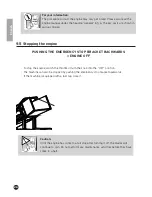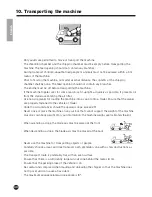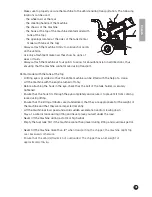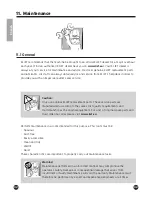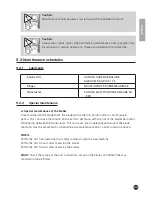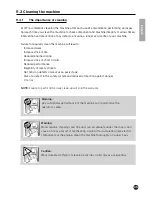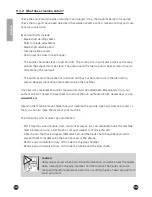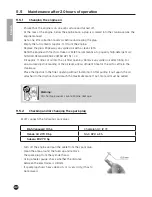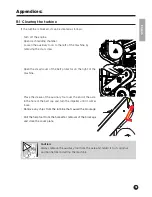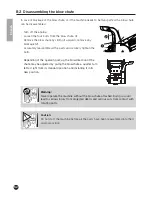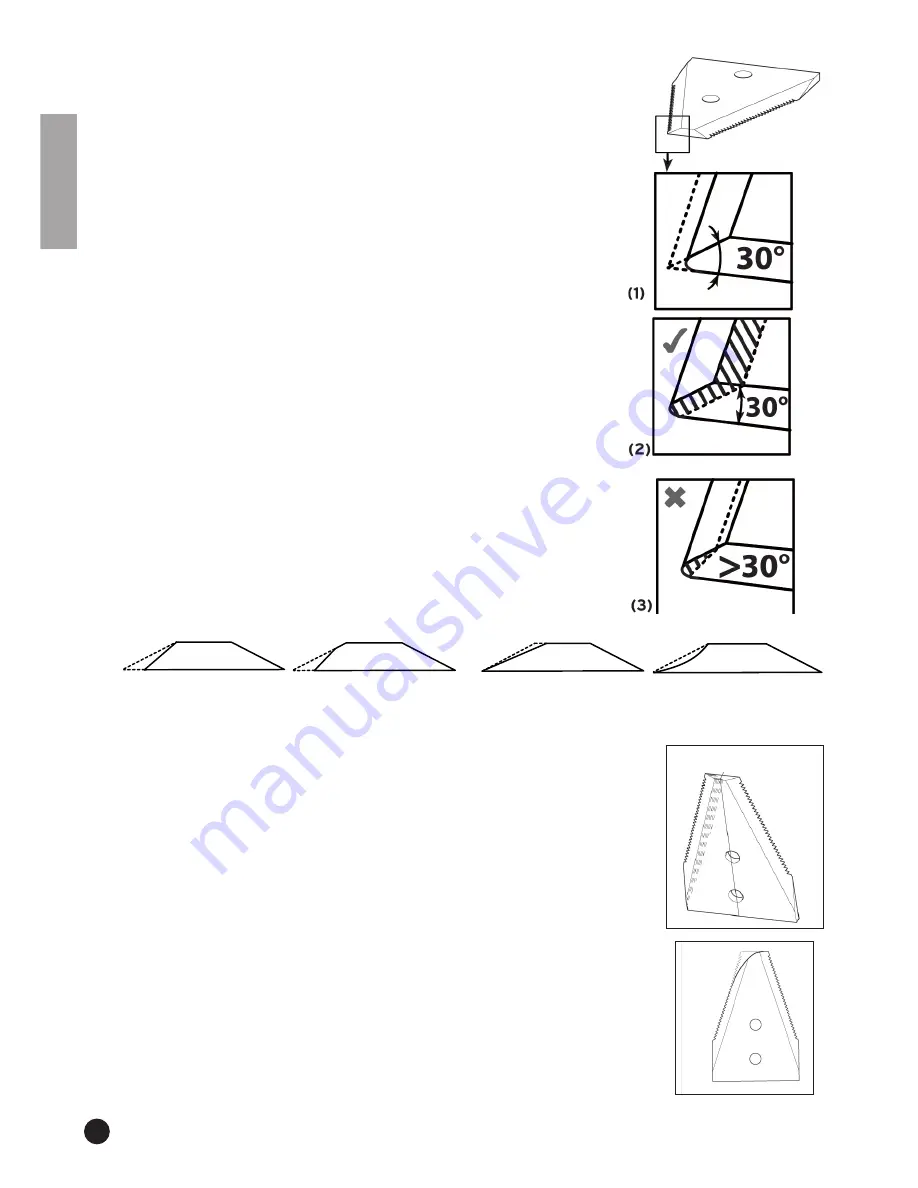
(4)
(5)
(6)
(7)
40
English
• If blades become dull, the sharp cutting edge will become worn and
will be upset to form a wider rib.
(1)
• By grinding a little metal from the cutting edge, you can again
obtain a sharp cutting edge from this wide rib.
(2)
• Grinding is performed by moving the grinding disc along the angled
cutting edge.
• Note: If you grind regularly, you will only have to grind away a small
bit of the metal each time to again obtain a sharp cutting edge. This
will ensure very short grinding times and you will always have the
best possible cutting edge.
• Avoid grinding at the same location for a longer period of time.
The associated local discoloration of the blades indicates heating,
resulting in a change of the material structure and decreased hard-
ness.
• It is extremely important that the existing cutting angle be re
-
spected when grinding.
(3: incorrectly ground blade)
• Failure to observe the correct cutting angle, and grinding at a blunt
angle
(4)
or an interrupted cutting angle
(5)
will slow down the
blades on the timber, resulting in a loss of capacity. Too sharp a cut-
ting angle
(6, 7)
will lead to a weakened cutting edge and conse-
quently, to a considerably shorter blade life.
• Never grind the rear side of a blade. On RESIST/6
TM
blades, the profiling
is on the rear. If you grind away the teeth, the blade will lose a great
deal of its cutting force.
• The top of the blade suffers the most during chipping. Therefore it is
best to grind them as little as possible to avoid weakening.
• At each grinding service, the active cutting edge becomes a little bit
smaller due to the removal of a small bit of the material. Blades may
be ground until half-way through the width of the blade tip. Exceeding
this limit compromises the service life of the unused cutting edge. We
recommend reversing the blades at this point (see § 11.4.3 Reversing and
replacing chipper blades).
• Rounded-off blades offer reduced chipping efficiency. In this event, fur
-
ther grinding of the blade serves no purpose. This is the time to reverse
or replace the blades.

